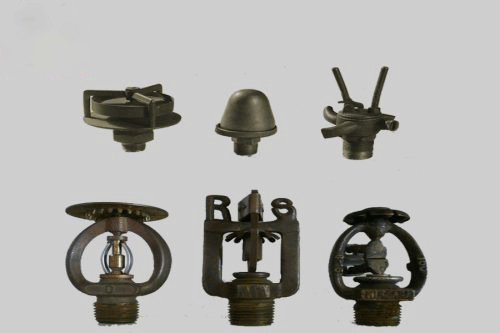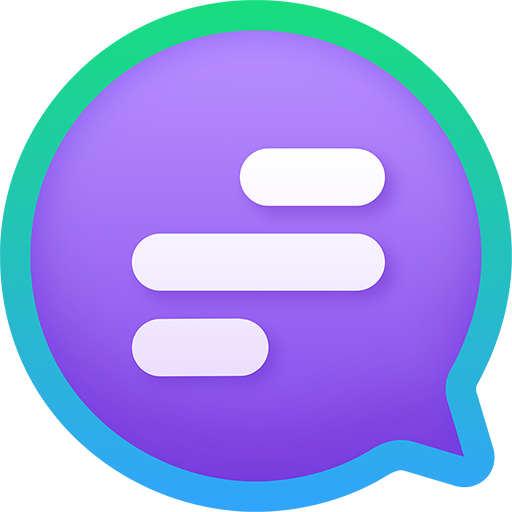Sprinkler fire extinguishing system
History of sprinklers
Sprinkler fire extinguishing system is an active fire protection method. This system consists of a water source that provides sufficient pressure and flow rate for a set of water distribution pipes and several sprinklers are connected to it. Although in the past this system was only used in large factories and commercial buildings, today such systems are available for use in homes and small buildings at affordable prices. The sprinkler fire extinguishing system is widely used all over the world and more than 40 million sprinklers are installed every year. More than 96% of fires that occur in buildings that are fully protected by sprinkler systems are controlled by sprinklers alone.
History of sprinkler fire extinguishing system

Leonardo da Vinci designed a sprinkler fire extinguishing system in the 15th century. He had used a large oven and a set of conveyor belts to automate his master’s kitchen. Once during a party, due to a series of errors, everything got messed up and there was a fire. “The sprinkler system worked more than well and washed away all the food and the healthy part of the kitchen.”
In 1723, Ambrose Godfrey created the first successful automatic sprinkler system. He used gunpowder to release a tank full of fire extinguishing fluid.
But the world’s first registered modern sprinkler fire extinguishing system was installed in this hall in 1812 by William Congreve, the architect of the Drury Lane Theater Royal in England, and under patent certificate number 3606 dated the same year. was registered The system consisted of a sealed cylindrical tank with a volume of approximately 95,000 liters, which was fed by a 10-inch (250 mm) water main, with branches extending to all parts of the hall. In the event of a fire, a series of smaller pipes fed by the above branches would pour water on the fire through half-inch (13 mm) holes drilled in them.
From 1852 to 1885, mesh piping systems were used as a means of fire protection in textile mills in England. But these systems were not automatic; Rather, someone had to use them. Inventors first began experimenting with automatic sprinklers around 1860. The first automatic sprinkler system was patented in 1872 by Philip W. Pratt of Abington, Massachusetts.
Henry S. Parmalee from New Haven, Connecticut is considered the inventor of the first series of automatic sprinklers. Parmalee succeeded in improving Pratt’s invention and creating a better sprinkler system. In 1874, he installed his own sprinkler system in his piano factory.
Frederick Grinnell optimized Parmaley’s design and registered the sprinkler system in his name in 1881. He continued to improve his innovative system and in 1890 he patented the glass disc sprinkler, which is essentially the sprinkler system used today.
Until the 1940s, sprinklers were installed almost exclusively for the protection of commercial buildings, where the owners could pay for the systems by saving on insurance costs. But with the passage of many years, today according to local building standards and regulations, fire sprinklers are mandatory safety equipment in parts of North America and specific uses including (and not limited to) hospitals, schools, hotels and other newly constructed public buildings. are counted But beyond the borders of the United States and Canada, we rarely see sprinkler systems mandated by building standards for common uses where the number of people present is not high (such as factories, process lines, retail stores, gas stations, and the like).
Today, sprinklers are installed in most other buildings such as schools and residential complexes. This is largely due to lobbying by the National Fire Sprinkler Network, the European Fire Sprinkler Network and the British Automatic Fire Sprinkler Association.
In most cases, the building regulations in Scotland and England have deemed it necessary to install sprinkler fire extinguishing systems in these places in order to comply with the safety of people present in certain types of properties.
In Scotland, all new schools, new clinics, greenhouses and high-rise apartments are protected by sprinklers. In England, all buildings over 30 meters high must be equipped with sprinklers. In 2011, Wales became the first country in the world to make it mandatory for new homes to have fire sprinklers. This law includes newly built houses and apartments as well as clinics and student dormitories and will be effective from September 2013.
Use sprinkler fire extinguishing system
Sprinklers have been used in the United States since 1874 and are often installed in factories that have seen catastrophic fires in terms of loss of life and property over the last century. Currently, in the United States, all high-rise and underground buildings that are generally 75 feet (23 meters) above or below the reach of firefighters, and the ability of firefighters to draw enough water hoses to extinguish a possible fire, are required to be equipped with becoming a sprinkler.
Sometimes sprinkler installation is required by building regulations and sometimes it is recommended by insurance companies to reduce financial losses or business interruptions caused by fire. In the United States, building codes for places of public assembly of more than 100 people and places that provide 24-hour lodging services, such as hotels, nursing homes, dormitories, and hospitals, are usually either based on building codes or as a prerequisite to receiving state financial assistance. And federal or as one of the conditions for obtaining a license (which is required for institutions that seek to train medical personnel), they have required the installation of sprinklers.
In Norway since July 2010, all new houses thathave more than two floors and also all new hotels, sanatoriums and hospitals are required to have sprinklers. In other Scandinavian countries, the requirement to install sprinklers in new sanatoriums has been imposed or will be imposed soon, and in Finland by 2010, one third of sanatoriums were renovated and equipped with sprinklers. A fire in the detention center for illegal immigrants at Schiphol Airport in the Netherlands on October 27, 2005, which killed 11 detainees, led to the improvement and installation of sprinklers in all such prisons in the Netherlands. The fire incident at Dusseldorf Airport in Germany on April 11, 1996, which resulted in the death of 17 people, led to the installation of sprinklers in all major German airports. In most other European countries, the installation of sprinklers in shopping centers, large warehouses and high-rise buildings has been required.
دیدگاه خود را با ما در میان بگذارید














